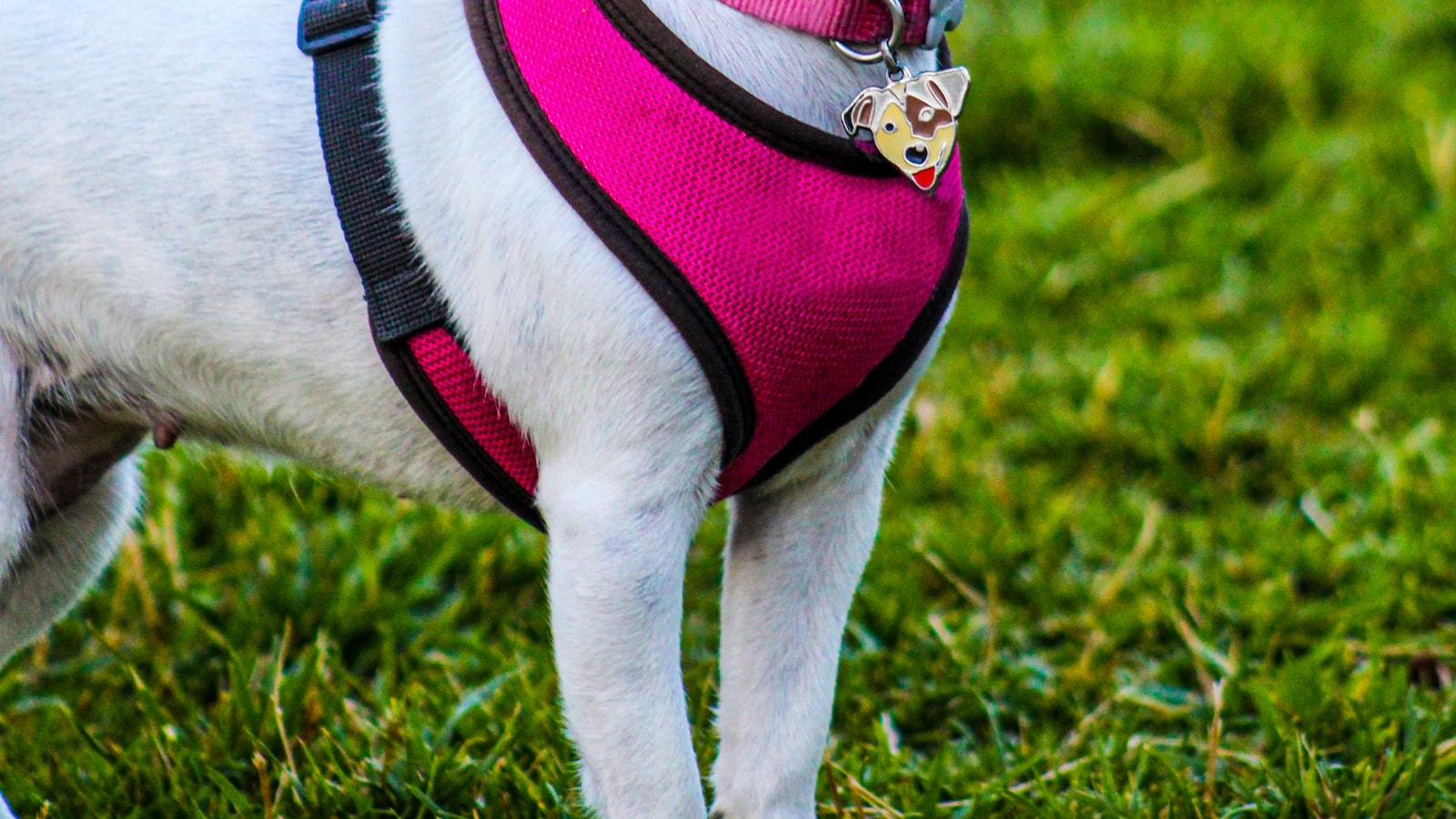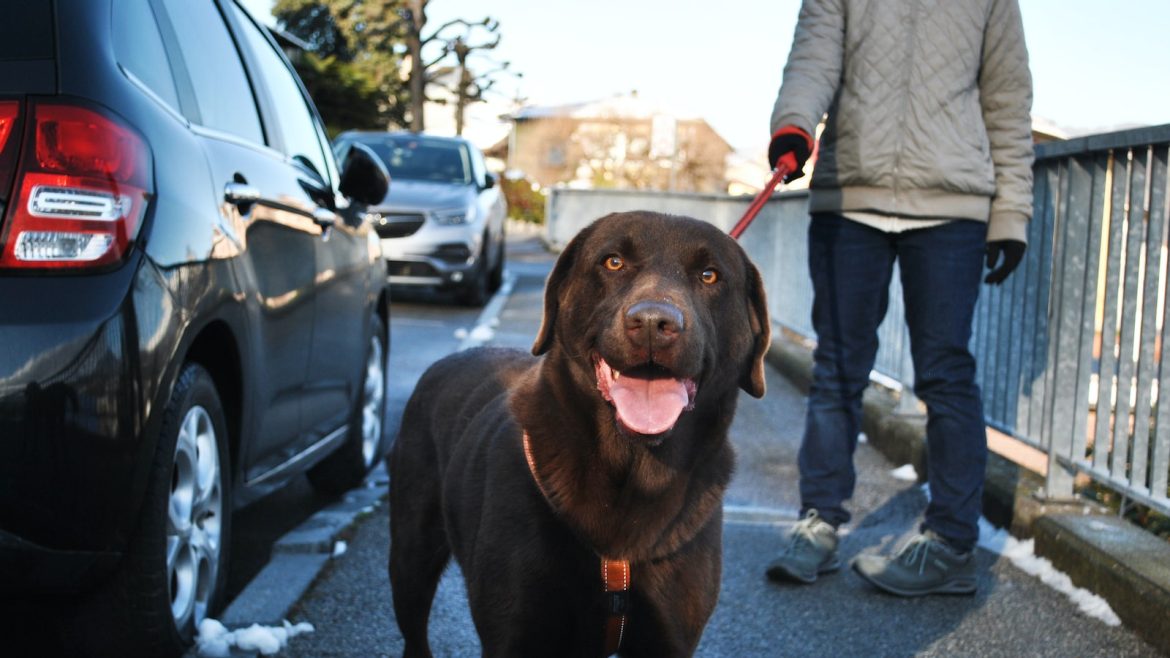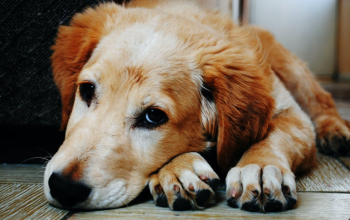Walking your dog should be an invigorating experience, filled with trotting paws and wagging tails. However, if your beloved companion transforms into a leashed lunatic whenever another dog or human comes into view, then this joyful activity can quickly become a stressful endeavor. Leash reactivity can turn an ordinary stroll into a tense tug-of-war, leaving both you and your pup feeling defeated. But fear not, for there is hope on the horizon! In this article, we will explore effective strategies and invaluable tips to help your dog overcome leash reactivity, transforming your walks into a harmonious adventure where you and your furry friend can once again bask in the joy of each other’s company. So, buckle your pooch’s leash and get ready to embark on a journey towards leash-reactivity-free walks that will leave tails wagging and hearts bursting with contentment.
Understanding Leash Reactivity in Dogs: Unraveling the Causes and Triggers
Uncovering the Enigmatic Puzzle of Canine Leash Reactivity
Leash reactivity in dogs can often be a perplexing challenge for pet owners. While many dogs exhibit exemplary behavior when off-leash, their behavior can take an unexpected turn when constrained by the lead. The causes behind leash reactivity can be multi-faceted, resulting from a combination of genetic, environmental, and physiological factors. It is crucial for dog owners to delve into the intricate layers of this issue, as a basic understanding can pave the way to effective management and training techniques.
Causes of Leash Reactivity:
1. Lack of Socialization: Insufficient exposure to various stimuli during a dog’s formative period can lead to heightened anxiety when encountering new experiences on a leash.
2. Fear and Anxiety: Traumatic experiences or general anxiety can trigger reactive behavior, as dogs may feel vulnerable or threatened when restrained, perceiving a lack of escape options.
3. Protective Instincts: Dogs may display leash reactivity as a result of a strong desire to guard their territory or assert dominance over their surroundings.
4. Frustration and Impatience: Some dogs become reactive due to frustration and impatience, as the restrictions of a leash hinder their freedom to explore and interact with their environment.
Unraveling the Triggers:
1. Other Dogs: The presence of unfamiliar canines can often provoke leash reactivity as dogs may interpret them as a threat, resulting in defensive or aggressive behaviors.
2. Noises and Sights: Loud sounds, sudden movements, or unfamiliar visual stimuli can startle dogs on a leash, leading to reactive responses as they struggle to assess the situation and protect themselves.
3. Crowded Environments: Overstimulation caused by bustling streets, crowded parks, or busy urban areas can trigger reactive behavior, as the density of people and activities can overwhelm some dogs.
4. Perceived Threats: Leash reactivity may occur when dogs perceive a person or animal as imposing, whether due to physical size, body language, or any other factors that trigger the dog’s fear or anxiety.
By gaining a deeper understanding of the causes and triggers of leash reactivity in dogs, owners can take proactive steps towards addressing this behavioral issue. Implementing positive reinforcement training, seeking professional guidance, and ensuring a safe and controlled environment during walks can contribute to the gradual reduction of leash reactivity, leading to happier and healthier canine companions. Remember, patience, consistency, and empathy are the keys to unraveling this enigmatic puzzle and fostering a harmonious bond with our furry friends.
Practical Strategies for Managing and Minimizing Leash Reactivity
When it comes to managing and minimizing leash reactivity in your furry friend, it’s important to remember that patience, consistency, and positive reinforcement are key. With a few practical strategies, you can help your pup become more confident and calm on their walks, making your daily strolls a pleasant and stress-free experience for both of you.
Here are some creative tips you can try:
- Find the right equipment: Using a front-clip harness or a head halter can provide better control and reduce pulling, which can contribute to leash reactivity.
- Practice counter-conditioning: Slowly expose your dog to their triggers from a safe distance, rewarding them with treats and praise for calm behavior. Gradually decrease the distance over time, allowing them to make positive associations with the triggers.
- Play the “Look at That” game: Teach your pup to focus on you when they see something that typically triggers their reactivity. Pair the trigger with a cue like “look,” followed by a tasty treat. This game helps redirect their attention and reinforces positive behavior.
- Engage in mental and physical stimulation: Provide your dog with plenty of exercise and mental enrichment, such as puzzle toys or training exercises. A tired and stimulated dog is generally less reactive on a leash.
Remember, managing leash reactivity takes time and effort. With these practical strategies and a whole lot of love, you can guide your furry friend towards becoming a more relaxed and well-behaved walking companion.
Building Positive Associations: Effective Training Techniques for Leash Reactive Dogs
Walking your furry friend should be an enjoyable experience for both of you, but when your dog becomes reactive on a leash, it can make the activity stressful and unpleasant. Leash reactivity can manifest as excessive barking, lunging, or pulling towards other dogs or people, creating tension and making walks a challenge.
Fortunately, there are effective training techniques to help your leash-reactive dog overcome their reactive behavior and build positive associations with walking on a leash. With patience, consistency, and positive reinforcement, you can transform your walks into successful and enjoyable bonding experiences:
- Desensitization and Counterconditioning: Gradually expose your dog to their triggers at a controlled distance while rewarding calm behavior, helping them build positive associations and reducing reactivity.
- Clicker Training: Use a clicker to mark and reward desirable behavior in real-time, helping your dog understand the desired response more effectively.
- Focus Exercises: Teach your dog to pay attention to you on walks by rewarding eye contact and maintaining their focus, helping divert their attention from potential triggers.
- Engagement Training: Train your dog to engage with you during walks through interactive games and positive reinforcement, fostering a strong bond and minimizing reactivity.
Creating Enjoyable Walks: Strengthening the Bond with Your Leash Reactive Dog
Walking your dog should be a fun and exciting experience for both of you, even if your furry friend tends to get reactive on the leash. With a little patience and some helpful tips, you can turn those walks into bonding moments that strengthen your relationship. Here are some creative ideas to make your walks enjoyable:
- Vary Your Route: Spice up your regular walking routine by exploring different routes and parks. Exposing your leash reactive dog to new environments can gradually desensitize them to triggers and teach them that not every passerby is a threat.
- Engage Their Senses: Encourage your dog to sniff and explore their surroundings, allowing them to engage their senses while on a walk. Sniffing is mentally stimulating for dogs and can help redirect their focus from potential triggers. Plus, it gives them a chance to enjoy their walk in their own unique way.
- Use Positive Reinforcement: Reinforce good behavior by rewarding your dog with treats, praise, or playtime. This positive reinforcement helps them associate pleasant experiences with walking, making them more likely to exhibit calm behavior rather than reacting negatively.
An enjoyable walk is not only about physical exercise but also about building a stronger bond with your leash reactive dog. By incorporating these creative ideas into your routine, you can transform your walk into a special time for both of you, filled with smiles, tail wags, and a deeper connection.
Insights and Conclusions
As we conclude this journey towards helping your furry friend overcome leash reactivity, we hope you can now envision a future filled with joyful strolls and harmonious walks together. The path may have seemed daunting at first, but with patience, understanding, and a touch of creativity, you can conquer any hurdle that stands in the way of your canine companion’s happiness.
Remember, as you embark on each walk, be a beacon of reassurance for your pup, reminding them that you are their steadfast guide. Take solace in the knowledge that every small victory along the way paves the road to success. In this journey, there are no shortcuts, but the end destination is well worth the effort.
Celebrate the bond that grows ever stronger as you both navigate the twists and turns of sidewalk adventures. Appreciate the beauty of the world around you, noticing the wag of a tail, the sun kissing their fur, and the joy in their eyes. With each step forward, you will witness the blossoming transformation of your once-reactive companion into a confident and composed canine.
Throughout this process, always maintain a neutral tone, understanding that patience will be your greatest ally. Remember, every dog is unique, and progress may come more swiftly for some than others. Embrace the individuality and personality of your four-legged friend as you work together towards this shared goal.
As you weave through your neighborhood, continue to offer kindness and empathy to passersby who may not understand the battles you face. Educate them gently, knowing that a compassionate approach can help open minds and build a supportive community.
And above all, savor the present moment. Treasure the sheer joy and privilege of walking alongside your dog, for every outing is an opportunity to bond, connect, and find solace in each other’s presence.
So go forth, adventurer of leashes! Embrace this newfound knowledge and embark on the path of overcoming leash reactivity, hand in paw with your beloved companion. The road may be winding, but with love, dedication, and a sprinkle of creativity, you can forge a lifetime of enjoyable walks and unforgettable memories together.
We all understand the importance of exercising our bodies, but our pets also require daily activity and mental stimulation to be healthy. For dog owners, going for a walk is an invaluable opportunity to provide this. Unfortunately for some, taking Fido for an outing can become a dreaded chore, as their pup becomes reactive to the leash or to passing dogs. With some patience and understanding, leash reactivity can be overcome, and the days of enjoying leisurely walks with your pup can be regained.
Leash reactivity, though very common, is not something that dogs are born with. It is usually rooted in anxiety, lack of socialization, or the dog’s natural instincts to protect the pack. The object or stimulus of their reactive behavior can vary; common include other dogs, pedestrians, bicyclists, and cars. Whatever the cause, it is important to start by understanding what triggers the reaction and then finding ways to mitigate it.
Start by breaking down the issue into smaller achievable goals. Examine the exact circumstances that cause your dog to become reactive and consider ways it can be avoided or reduced. For instance, if passing dogs are a trigger, consider avoiding routes where other dogs might be present, or where other people might be more prevalent. If this is not an option, use distractions to keep your pup’s focus on something besides the potential stimulus of the walk. Offer treats or other rewards to steer their attention away from whatever concerns them.
Although you may be tempted to give into their reactivity by either giving soothing words or jerking them back, such actions only add to their anxiety and reinforce the behavior. Remember, you are in a leadership role; stay calm and be confident on the walk. Dogs are very good at detecting and responding to our energy, and your reassurance tha everything is okay will be taken in by your pup as a sign that it is safe to continue despite any perceived hazards.
The most important thing to keep in mind when helping your pup to overcome leash reactivity is that it is a process, and there is no solution that works for everyone. As with all behavior modification, patience and understanding will be your best friends in the journey to reclaiming your daily walks together.





